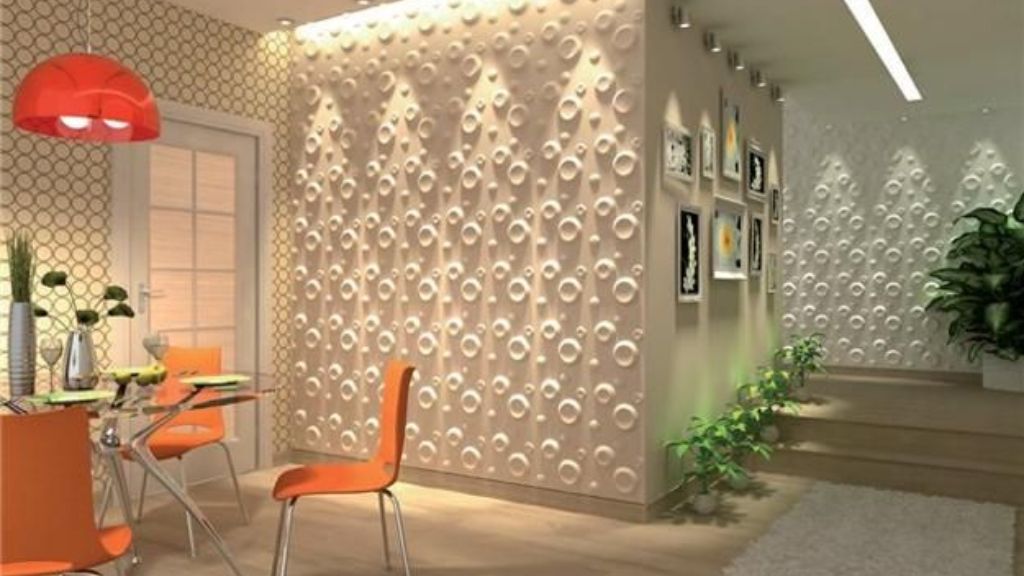What is Wall Cladding and its Types?

In the field of architecture and design, wall cladding has become a well-liked and adaptable choice for improving a building’s appearance and usefulness. Wall cladding is applying a decorative and protective layer to a structure’s interior or external walls. This can change a building’s look while providing plenty of advantages in use.
Covering a building’s external or interior walls with a second layer of material is known as wall cladding. Many materials, each with special qualities and attractive appearances, can be used to create this layer. Wall cladding serves the dual purpose of improving appearance and protecting the base structure from various environmental conditions.
Although wall cladding is commonly used to improve a building’s appearance, it has many other benefits as well. In addition to providing aesthetic value to your house, wall cladding protects against extreme weather and provides thermal insulation. EPS Interiors is the best place to start if you are searching for cost-effective cladding solutions.
Wall claddings are becoming increasingly popular, and they come in various sizes and materials. Many kinds of wall cladding are available, ranging from standard hardwood claddings to 3D wall cladding.
Types of Wall Cladding
Stone Cladding
Stone veneer provides a classic and customized look. Natural stones such as sandstone, granite, or limestone are used, cut into thin slabs, and affixed to the walls. Stone cladding is a popular option for high-end projects because of its superior weather resistance, durability, and opulent appearance.
Brick Cladding
Buildings with brick cladding have a traditional, robust appearance. It offers the beauty of conventional brickwork with less weight and expense by employing thin bricks or brick slips that are affixed to the walls. Brick cladding is frequently utilized for both commercial and residential purposes.
Vinyl Cladding
Vinyl siding is an affordable choice that requires minimal maintenance. Since it is widely available in a variety of colors and designs, including wood-like finishes, residential buildings frequently use it. One popular type of wall cladding is vinyl cladding.
Since this cladding is inexpensive and provides sufficient protection, most residences use it. Exterior walls are usually covered with vinyl cladding, a type of plastic sheeting. Vinyl is the best material to use for cladding whether you want it to be waterproof or attractive. It is especially advantageous for small apartments. Choosing the proper cladding material is important for achieving both aesthetic and practical benefits for building design. EPS Interiors cladding material has its own unique features and advantages.
Fiber Cement Cladding
Sand, cement, and cellulose fibers are combined to create fiber cement cladding, which is a strong and fire-resistant material. While providing improved durability and weather resistance, it might resemble brick, stone, or wood.
Wooden Cladding
Using natural wood materials to cover a building’s external or interior walls is known as wooden cladding, sometimes referred to as timber cladding or wood cladding. By connecting the building with nature, it gives it a cozy, natural feel.
There are several ways to accomplish wooden cladding, including wooden shingles, shakes, boards, or panels. It has good insulating qualities and is frequently used in both commercial and residential projects.
Stainless Steel Cladding
Using stainless steel sheets or panels to cover the surface of walls is known as stainless steel cladding. Because it is strong and resistant to corrosion, stainless steel may be used for both indoor and outdoor purposes.
Because of its sleek and modern appearance, it is frequently used in commercial and industrial structures and current architectural styles. In locations where these factors are often present, stainless steel cladding is the material of choice due to its exceptional resistance to weather, fire, and chemicals.
Aluminum Cladding
Using aluminum sheets or panels to cover a building’s walls is known as aluminum cladding. Because aluminum is a lightweight, corrosion-resistant material that can be used in a variety of architectural styles, it is also easy to work with.
Modern construction, especially high-rise buildings and commercial buildings, frequently use aluminum cladding. Its recyclability supports sustainable building methods and provides good thermal and acoustic insulation qualities.
Laminate Cladding
The term “laminate cladding” describes covering walls with laminated sheets. Decorative paper, resin, and melamine are just a few of the materials that are commonly used to create laminates.
The laminates are an affordable substitute for natural materials since they may simulate the look of different textures, such as wood, stone, or other finishes.
Laminate flooring is frequently utilized for furniture, wall panels, and cupboards in interior spaces. It is a flexible choice for interior design projects because it comes in a wide variety of colors and designs. Wall cladding is the ideal choice if you’re searching for a more durable structure that will protect the walls and their occupants. It is particularly important for locations that experience extreme weather. For more information, visit our website.
Wall Cladding’s benefits
Enhanced Aesthetics
A building’s visual attractiveness can be greatly enhanced by wall cladding by adding texture, color, and patterns. It enables designers and architects to craft distinctive facades that accentuate the function and aesthetic of the structure.
Weather and moisture protection
As a protection against the elements, wall cladding protects the underlying structure from rain, wind, UV rays, and other environmental factors. This defense lessens the need for maintenance and increases the building’s lifespan.
Superior Insulation
A building’s insulation can be improved by some cladding materials, such as foam-backed vinyl or insulated metal panels, which can improve energy efficiency and lower heating and cooling expenses.
Insulation that sounds
Wall cladding, particularly in locations with significant noise pollution, can help with sound insulation, resulting in a calmer and cozier interior atmosphere.
A rise in the value of the property
Properly maintained and aesthetically beautiful cladding may add significant value to a building, so it’s a wise choice for property owners. For further ideas on marble wall cladding, wooden external wall cladding, modern exterior stone cladding, and other topics, contact EPS Interior Industries. Our professionals will respond to any query you may have and assist you in selecting the ideal material for your home.
